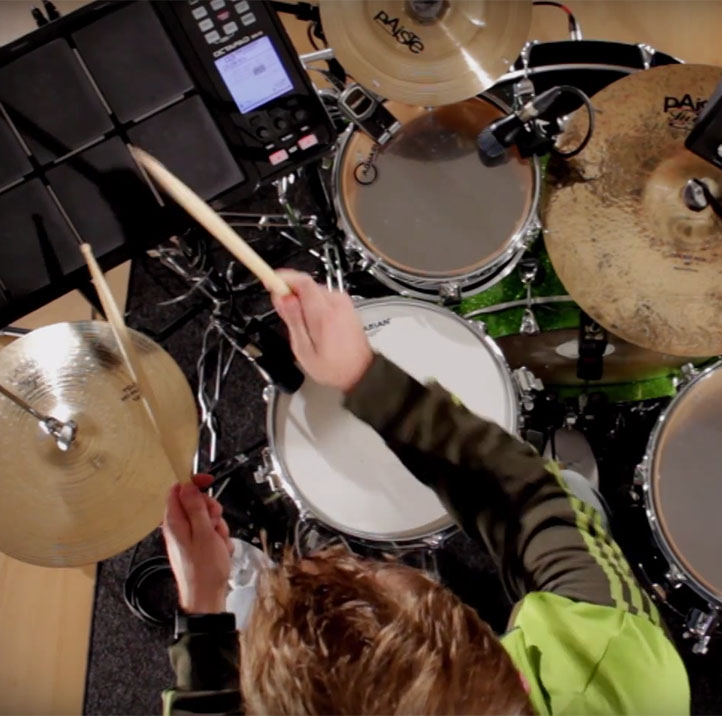A Simple Update to Your Acoustic Drum Kit
When it comes to drumming, acoustic drum triggers are the gateway to a sound palette limited only by your imagination. If you can think it, acoustic triggers can make it happen.
Contributed by Roland US Team
The Source of Sound…
Contemplate for a moment, the nature of sound. No matter what you play… a guitar, a piano, a wind instrument, even tapping your desk, the sound you hear comes as a result of striking something, like a piano key, a string, or even by hitting the instrument itself (like a drum head). Sound transmits by vibration, which resonates at a given frequency, which is then picked up by your ear and interpreted as sound. Even when you speak, your vocal chords vibrate at a frequency that your ears pick up, which your brain interprets as speech and words. The surface or interface you strike becomes the ‘trigger’ – the source of the sound.
The sound you hear from your drums is exactly the same. By playing an acoustic drum, you cause the drum head to vibrate. That vibration creates a sound, which vibrates at a certain frequency, and is in turn controlled by the tension of the drum head. The change in frequency of the vibration causes a change in pitch, while the drum’s tone is controlled by a variety of factors including the type of drum head, the shell material and amount of damping.
Roland V-Drums are no different. The V-Drums mesh (or rubber) pad vibrates, which is picked up by a sensor. Just like your ear picks up sound and your brain processes it, a V-Drums module does the same thing. A V-Drums module can even adjust tuning/pitch, tone and drum shell material. Perhaps that’s why V-Drums modules are called ‘brains’ in the drumming world.
So, what is an Acoustic Drum Trigger?
Just like microphones, acoustic drum triggers are used to reinforce and amplify any acoustic drum sound.
Acoustic drums and cymbals can create an array of different sounds, only limited by the range of instruments available. So, a four-piece drum kit with ride and hi-hat cymbals can only create a certain set of sounds, whereas a 32-piece monster with many different cymbals, cowbells and tambourines will add many more tones to your soundscape. But what if, by playing your acoustic drum, you could simultaneously trigger an additional, electronic sound? This is exactly what acoustic drum triggers do.
 By mounting Roland’s RT-30 series acoustic drum triggers to your acoustic snare, toms and kick drum they pick up the vibration and send that information to any Roland V-Drums module or percussion instrument, such as the TD and TM series trigger modules, SPD-SX Sampling percussion pad or SPD-30 Octapad. You can choose the sound triggered by the module; the drum triggers are velocity sensitive and will detect how hard you are playing a certain sound. So, if you can think it, you can trigger it and you can play it.
By mounting Roland’s RT-30 series acoustic drum triggers to your acoustic snare, toms and kick drum they pick up the vibration and send that information to any Roland V-Drums module or percussion instrument, such as the TD and TM series trigger modules, SPD-SX Sampling percussion pad or SPD-30 Octapad. You can choose the sound triggered by the module; the drum triggers are velocity sensitive and will detect how hard you are playing a certain sound. So, if you can think it, you can trigger it and you can play it.
Here’s Craig Blundell showing you a few possibilities by adding triggers to your acoustic drums and combining them with a Roland percussion instrument.
Related Articles
Hybrid Electronic/Acoustic Drumming Guide
TM-6PRO Vs SPD-SX which ones is best for drummers?
Hybrid Theory – Acoustic and Electronic Drums






